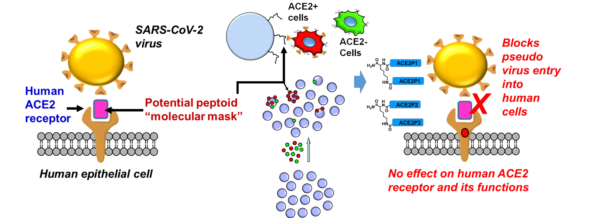CXCR4, a chemokine receptor, plays a crucial role in cell migration and is involved in various diseases, including cancer, HIV infection, and inflammation. Designing a CXCR4-targeted library of small molecules that bind specifically to CXCR4 can be a promising approach for developing drugs against these diseases. In this blog post, we will discuss how to design compounds that target CXCR4.
Structural considerations:
The CXCR4 receptor is a transmembrane protein with seven transmembrane alpha-helices. Targeting this receptor creates a unique set of challenges due to its hydrophobicity, its location in the cell membrane, and its relative complexity. Developing CXCR4-targeted molecules requires a thorough understanding of the receptor’s structure and function, as well as the characteristics and properties required to bind to CXCR4.
Pharmacophore modeling:
Pharmacophore modeling is an essential component of molecular design that enables researchers to identify the key features of a molecule that are responsible for its biological activity. Pharmacophore modeling can be employed to develop a virtual model of different potential binding sites in the CXCR4 receptor. Once researchers have identified the key features, they can use the virtual model to identify and screen a wide range of compounds to find those with the desired pharmacological properties.
High-throughput screening (HTS):
The high-throughput screening of compound libraries is an established technique for drug discovery. In this process, a large number of compounds are screened for their binding affinity to a potential target. HTS can be used to identify lead compounds that specifically bind to CXCR4. Once lead compounds have been identified, they can be optimized further through medicinal chemistry for their pharmacokinetic properties and to improve binding affinity.
Rational design:
Rational design is an approach that employs computational and experimental techniques to design molecules. Rational design enables researchers to optimize known leads and identify novel compounds that can bind to the desired target and optimize the binding affinity. The rational approach can provide a better understanding of how the compounds interact with the CXCR4 receptor, thereby enhancing the efficiency and accuracy of the drug design process.
Fragment-based drug design:
Fragment-based drug design is a technique that involves identifying small, low molecular-weight compounds that can interact with the target protein. These fragments can be optimized further to develop potent inhibitors. Fragment-based drug design can be employed to develop CXCR4-targeted compounds by identifying the key binding fragments and then optimizing them for improved binding affinity.
Conclusion:
Developing CXCR4-targeted libraries presents a robust approach for drug discovery. By employing a range of molecular design techniques such as pharmacophore modeling, HTS, rational design, and fragment-based drug design, researchers can identify and optimize compounds that target CXCR4. This approach has the potential to lead to the development of novel therapies for numerous diseases, including cancer and HIV infection with the high specificity and minimal side effects. It is essential to continue to design and optimize CXCR4-targeted libraries to provide improved therapeutic options.


